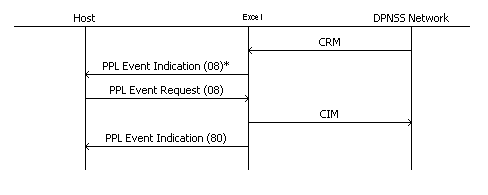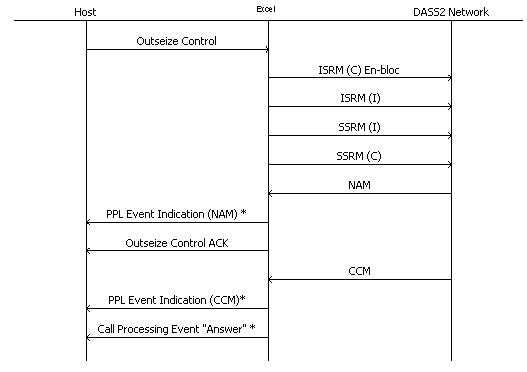
You are here: CSP Developer’s Guide: Common Channel Signaling > 10 DASS2/DPNSS > Call Flows

Overview
This section describes call flows for DASS2, DPNSS, and DPNSS Virtual Calls.
Many of the following call flows have optional messages based on the configuration. If a message is optional, an asterisk is displayed after the message.
DASS2 Call Flows
Refer to the following figures for DASS2 call flow information.
DASS2 Outgoing Call

* Optional Message
DASS2 Incoming Call

The above call flow shows the sequence for two scenarios for Request for Service With Data.
The Answer is propagated by L4 or from Generate Call Processing Event).
* Optional Message.
DASS2 Call Clearing
User-Initiated Call Clearing
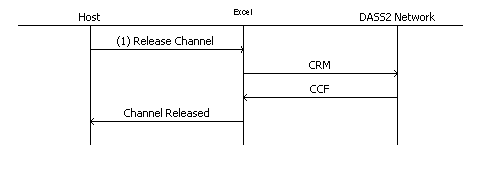
Network-Initiated Call Clearing

(1) Release Channel is Release Channel With Data.
* Optional Message
DPNSS Call Flows
The following figures provide DPNSS call flow information.
DPNSS Outgoing Call En-bloc or Overlap Sending Mode
The switch automatically chooses whether to send the call en-bloc or overlap mode. If the size of the data in the ISRM is 45 bytes or less, the switch sends the call out in en-bloc mode. If the size of the data is greater than 45 bytes, the call goes out in overlap mode.
You have the option of forcing an outgoing call in overlap mode. You perform this by setting the value of Configuration Byte 2 to 0x01.
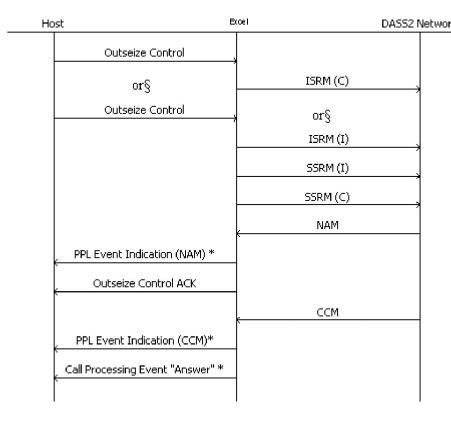
* Optional Message
DPNSS Incoming Call En-bloc Receiving
An ISRM(C) will generate a Request For Service With Data message to the host.
DPNSS Incoming Call Overlap Receiving
An ISRM (I) will be followed by a sequence of SSRM(I), concluded by an SSRM(C). The concatenated data from these service request messages will then be passed to the host in Request For Service With Data.

The above call flow shows the sequence for two scenarios for Request for Service With Data.
The Answer is propagated by L4 or from Generate Call Processing Event).
* Optional Message.
DPNSS End-to-End Message (EEM) Complete/Incomplete
Once a call is established, DPNSS supplementary information can be sent or received using the EEM message.
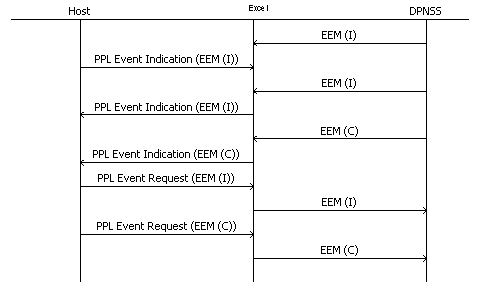
The following call flows depict a Network-Initiated DPNSS Clear Request Message and a Host Initiated DPNSS Clear Request Message.
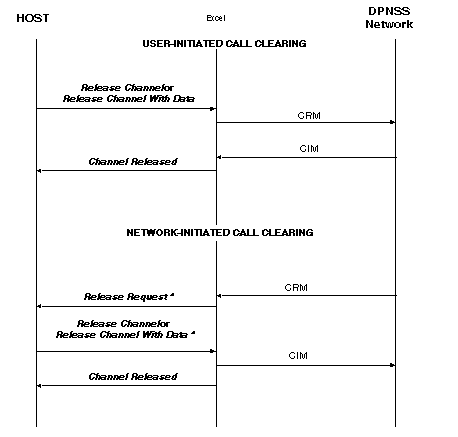
DPNSS Virtual Call Control
DPNSS supports the capability of having two calls up on the same channel simultaneously—one real and one virtual. Within a virtual call, the call control information is passed but does not use a voice channel.
Consequently, only real calls go through Layer 4 and virtual calls are controlled with direct messaging from the host to L3P via PPL Event Request and PPL Event Indication messages. Virtual calls are not able to use standard call control API messages since these messages utilize Layer 4. Standard API messages include:
• Outseize Control
• Request for Service with Data
• Park Channel
• Connection messages
• Release, Release with Data
All API messages between the virtual call PPL component and the host have the PPL component ID 0x51. This component value is the only way of distinguishing whether a message pertains to a real or virtual call.
With all virtual call control being communicated through the PPL Event Request and PPL Event Indication messages, the translation values in the table below must be known.
Important! All component values are 0x51.
Virtual call PPL event values are as follows:
|
DPNSS |
PPL Event |
|---|---|
|
NAM |
0x09 |
|
CCM |
0x05 |
|
CRM |
0x08 |
|
ISRM (C) |
0x00 |
|
EEM (C) |
0x22 |
|
SSRM (C) |
0x11 |
DPNSS Virtual Call Control Call Flows
DPNSS Virtual Outgoing Call En-bloc or Overlap Sending
The switch automatically chooses whether to send the call en-bloc or overlap mode. If the size of the data in the ISRM is 45 bytes or less, the switch sends the call out in en-bloc mode. If the size of the data is greater than 45 bytes, the call goes out in overlap mode.
You have the option of forcing an outgoing call in overlap mode. You perform this by setting the value of Configuration Byte 2 to 0x01.

Important! In a DPNSS Incoming Call En-bloc Receiving call flow, an ISRM(C) will generate a Request For Service with Data message to the host.
DPNSS Virtual Incoming Call Overlap Receiving
An ISRM (I) will be followed by a sequence of SSRM(I), concluded by an SSRM(C). The concatenated data from these service request messages will then be passed to the host in a PPL Event Indication message.

DPNSS Virtual Supplementary Message Call Flow
Once a call is established, DPNSS supplementary information can be sent or received using the EEM message.

Network-Initiated DPNSS Virtual Call Clear Request
The following call flows depict a User-initiated DPNSS Virtual Call Clear Request Message and then a Network-Initiated DPNSS Virtual Call Clear Request Message.
User-Initiated Call Clearing
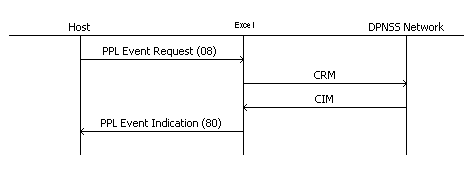
Network-Initiated Call Clearing
